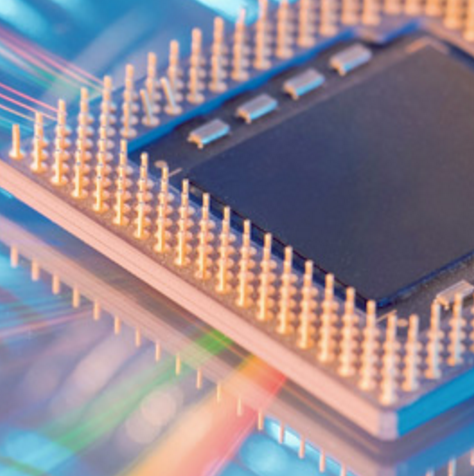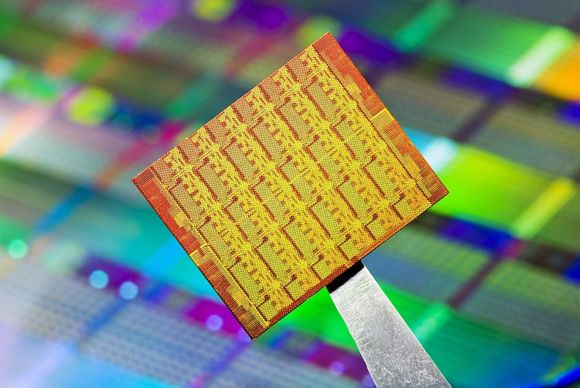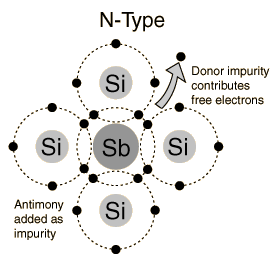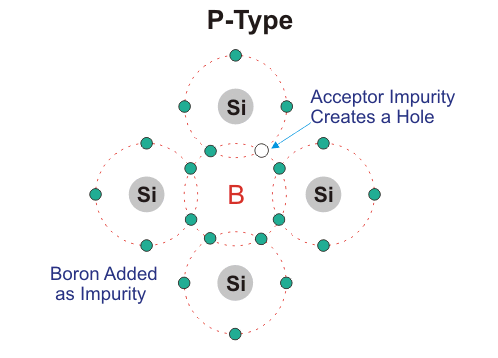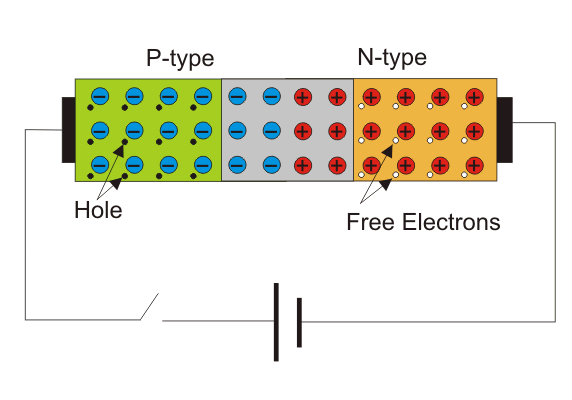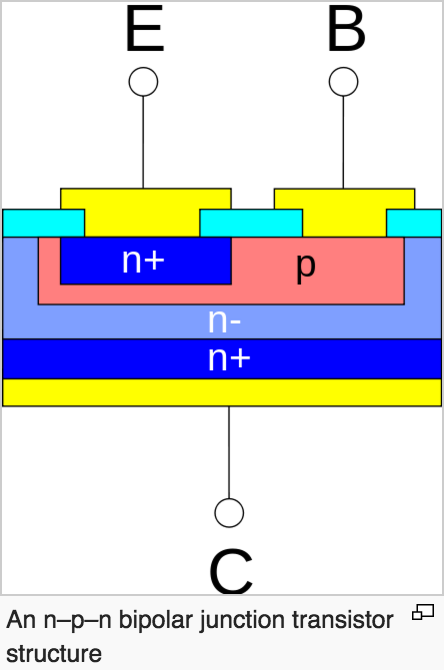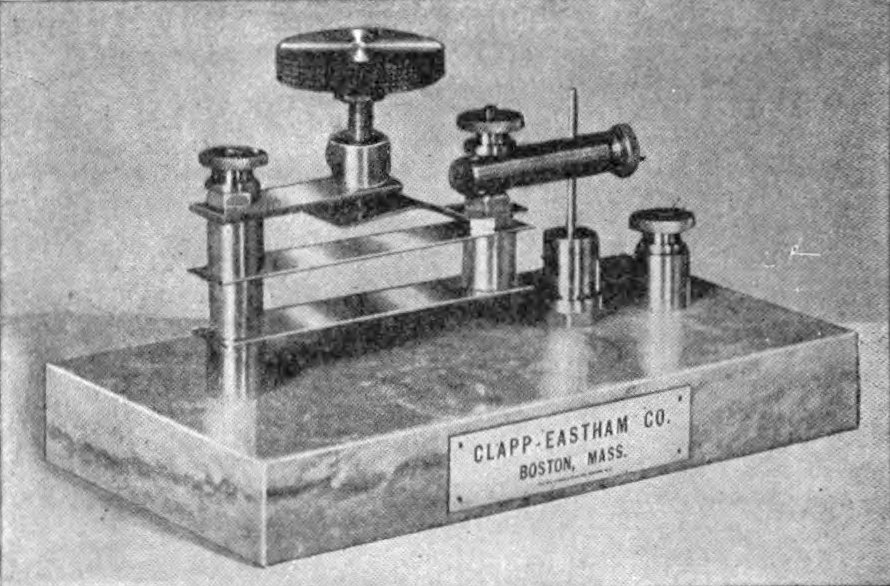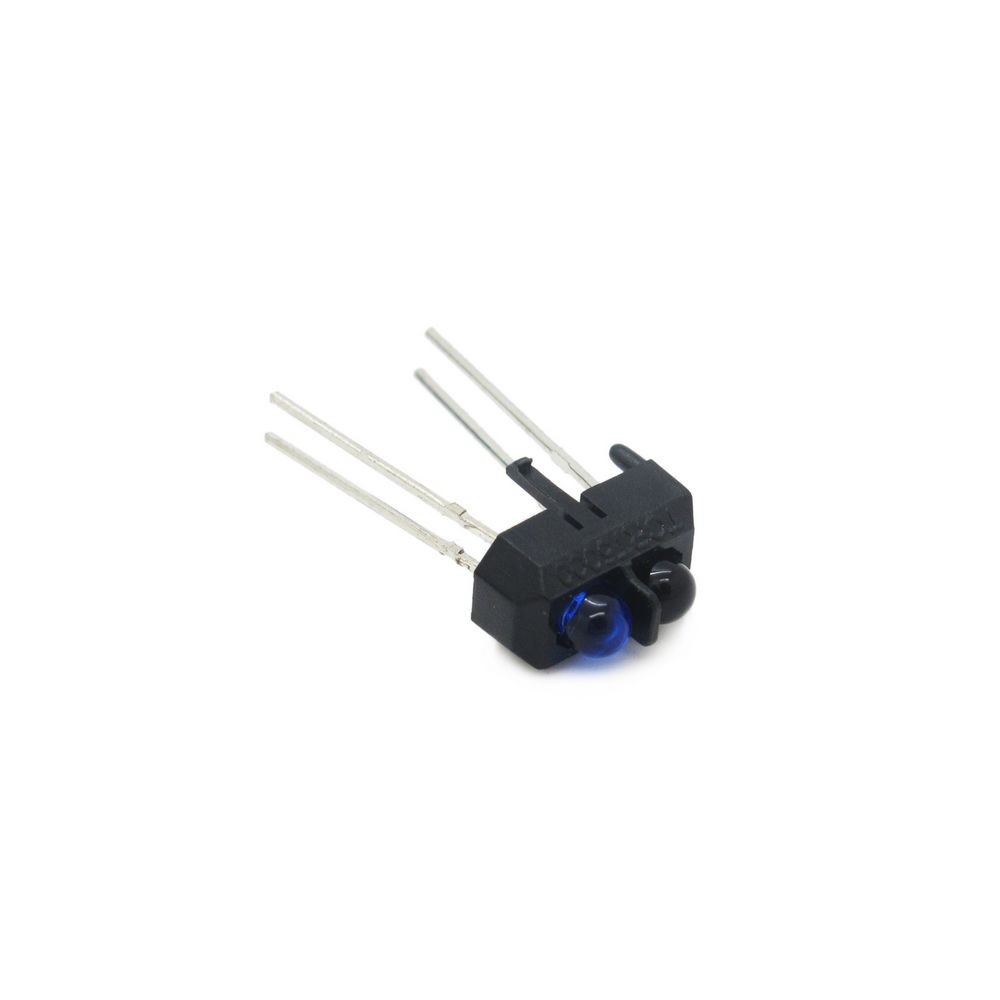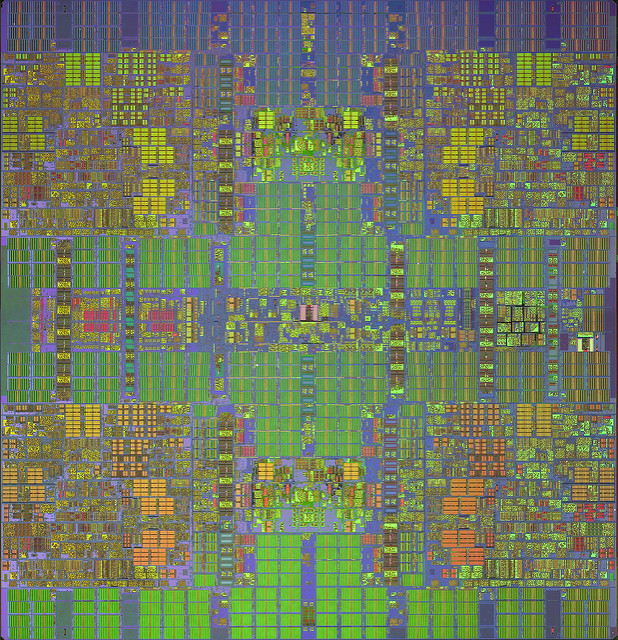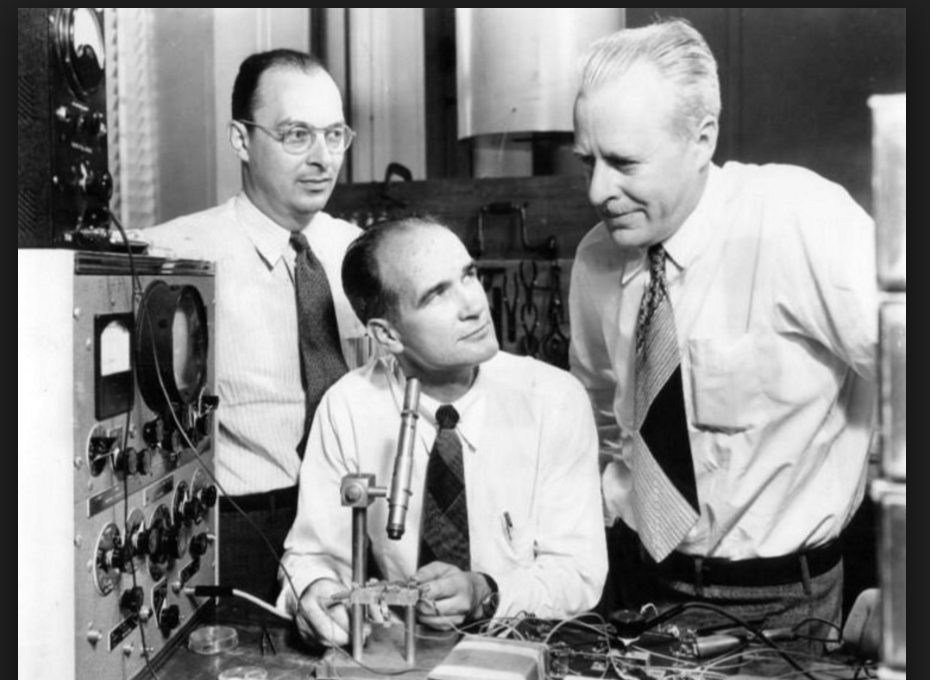Semiconductor Devices: Difference between revisions
| Line 123: | Line 123: | ||
==References== | ==References== | ||
Brain, Marshall. "How Semiconductors Work." HowStuffWorks. N.p., 25 Apr. 2001. Web. 27 Nov. 2016. | |||
Chabay, Sherwood. (n.d.). Matter and Interactions (4th ed., Vol. 2). Raleigh, North Carolina: Wiley. | Chabay, Sherwood. (n.d.). Matter and Interactions (4th ed., Vol. 2). Raleigh, North Carolina: Wiley. | ||
| Line 143: | Line 144: | ||
Sze, S. (1981). Physics of semiconductor devices (2nd ed.). New York: Wiley. | Sze, S. (1981). Physics of semiconductor devices (2nd ed.). New York: Wiley. | ||
"Timeline." Timeline | The Silicon Engine | Computer History Museum. The Silicon Engine, n.d. Web. 27 Nov. 2016. | |||
[[Category:Simple Circuits]] | [[Category:Simple Circuits]] | ||
Revision as of 00:17, 28 November 2016
Allison Youngsman 12/2/15
Claimed by Michael Eden (Fall 2016)
edited by Eric Lee (Fall 2016)
Semiconductor Devices
Semiconductor devices are electronic components with the electronic properties of semiconductors. Silicon, germanium, gallium arsenide, organic semiconductors are among the most common semiconductors used in these devices. These "semiconductors" are materials that are neither good conductors or good insulators. Due to low cost, reliability, and compactness, semiconductors are used for a wide range of applications. They also have a wide range of current and voltage handling capabilities, contributing to their suitability for a number of operations. They are commonly found in power devices, optical sensors, and light emitters. Perhaps more importantly, they are readily integrated into microelectronic uses as key elements for the majority of electronic systems, including communications, consumer, data-processing, and industrial-control equipment.
The Main Idea
The two most useful forms of semiconductor devices are diodes and transistors. Diodes are the simplest semiconductor device, which conducts current easily in one direction but conducts almost no current in the other direction. These are made by joining two pieces of semiconducting material,a junction called a "p-n" junction. One of the pieces contains a small amount of boron and the other contains a small amount of phosphorus. Transistors are constructed through two semiconducting junctions, or "p-n" junctions. These are the most common elements in digital circuits. The conductivity of these semiconductors can be controlled by introduction of an electric or magnetic field, by exposure to light or heat, or by mechanical deformation of a doped monocrystalline grid. Due to this, semiconductors are extremely useful and can be altered to fit specific purposes.
In the p-n junction that makes up a diode, the junction is formed through a process called doping. Doping involves turning silicon into a conductor by changing the behavior of it. In n-type doping, a phosphorus/arsenic impurity is created so that the resulting free electrons allow a electric current to flow through the silicon. Since electrons are negative in charge, this type of doping is called n-type doping and consists of the "n" in the p-n junction. In the p-type doping, a boron/gallium is added to the silicon lattice and when it happens, an empty area from an unbonded silicon electron forms. Because the empty area implies the absence of an electron and thus creates a positive charge, "p" was assigned as the name of the doping type.
A Mathematical Model
Semiconductors operate based on the concept of thermal energy exciting electrons and causing them to jump to the next higher (unoccupied) energy band.
These electrons can pick up energy (and drift speed) from an applied electric field. The filled energy band is called the “valence” band, and the nearly unoccupied higher energy band is called the “conduction” band. The number of electrons excited into the conduction band is proportional to a value called the Boltzmann constant, equivalent to the value:

Therefore, high conductivity (corrosponding to a favorable Boltzmann factor) can be calculated according to
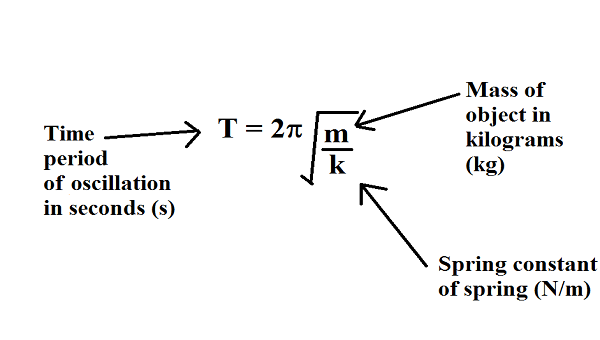
In addition, the total conventional current in a semiconductor can be calculated, according to the equation 
A Conceptual Model
The following diagram demonstrates how electron excitement in semiconductors works. Semiconductors are materials with small band gaps between the valence band and conduction bands. As you can see, a small amount of thermal energy is needed to promote an electron to the conduction band in a semiconductor.
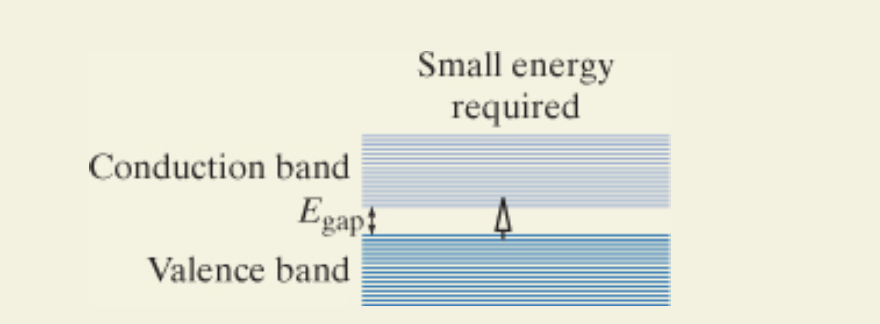
Examples
Simple
A simple application of a semiconductor would be the Cat's Whisker detector for radios, invented in the early 1900s.
Moderate
Optical sensors are moderately difficult applications of semiconductors. Optical sensors are electronic detectors that convert light into an electronic signal. They are used in many industrial and consumer applications. An example would include lamps that turn on automatically in response to darkness.
Difficult
A very complicated application of a semiconductor is its use in modern cellular phone devices, such as its use here in the iPhone 6.
Connectedness
Semiconductors are crucial to modern technology, and are used for memory storage as well as so many other technological innovations. This technology is used every day by millions of people for thousands of different applications. Most people in the world have used semiconductors in one way or another, even if they weren't aware of it. It is specifically connected to the major of Biomedical Engineering through memory storage and the complex computer programs used every day to conduct business and create simulations for the furthering of biomedical research. All industrial applications of semiconductors are very applicable, from amplifiers to transistors to silicon disks. Without semiconductors, much of the technology that the general population relies on today would not be possible.
Semiconductors are used in essentially every part of this technological and electronically-dependent world we live in today. They have both conductor and insulator properties and includes all of the metal we see in wires. Computers, phones, and other electronic devices all use semiconductors to fulfill their functions such as communication and efficiency. The most important aspect of semiconductors is utilization, which is shown through the use of switches. Inside electronic devices, the switches exist in extremely large numbers, which is why electronic devices process information in an incredible speed with surprising efficiency.
History
1874 Ferdinand Braun discovers that current flows freely in only one direction when a metal point and a galena crystal are put together.
1901 Jagadis Bose takes ownership of the discovery of the semiconductor crystal for detecting radio waves.
1940 Russell Ohl discovers the p-n junction.
1941-late 1960s The studying of semiconductor materials first began around the beginning of the 19th century. Prior to 1947, semiconductors were used only as two-terminal devices, such as rectifiers and photodiodes. They were most commonly used as detectors in radios, through devices called "cat's whiskers". During the era of WWII, researchers worked with semiconductors and cat's whiskers to make more effective diodes. After the war, two researchers named William Shockley and John Bardeen worked together to create a triode-like semiconductor: the first transistor. They realized that if there were some way to control the flow of the electrons from the emitter to the collector of this newly discovered diode, an amplifier could be built.The first transistor was officially created on the 23rd of December, 1947. John Bardeen, William Shockley, and another researcher named Walter Houser Brattain were credited for the invention and awarded a Nobel Prize for physics in 1956 for their work. After this, the utilization of semiconductors soon advanced to even more complicated applications. In the late 1960s, transistors moved from being germanium based to silicon based. Gordon K Teal was most responsible for this advancement, and his company, Texas Instruments, profited greatly. Portable radios are just one popular invention that benefited from silicon based semiconductors. Now, silicon based semiconductors constitute more than 95 percent of all semiconductor hardware sold worldwide.
John Bardeen, William Shockley, and Walter Houser Brattain, winners of the Nobel Prize for their invention of the transistor, are pictured above.
1970s Silicon technology is modernized and the race to fit all semiconductor processor technology into one chip is most active.
See also
Related Wiki pages:
-Transformers
-Resistors and conductivity
-Superconductors
-Electric Fields
-Transformers from a physics standpoint
Further reading
Chabay, Sherwood. (n.d.). Matter and Interactions (4th ed., Vol. 2). Raleigh, North Carolina: Wiley.
Sze, S. (1981). Physics of semiconductor devices (2nd ed.). New York: Wiley.
External links
Wikipedia page about semiconductors:
https://en.wikipedia.org/wiki/Semiconductor_device
Encyclopedia entry about semiconductors, including the history of semiconductors:
http://www.britannica.com/technology/semiconductor-device
References
Brain, Marshall. "How Semiconductors Work." HowStuffWorks. N.p., 25 Apr. 2001. Web. 27 Nov. 2016.
Chabay, Sherwood. (n.d.). Matter and Interactions (4th ed., Vol. 2). Raleigh, North Carolina: Wiley.
Electronics and Semiconductor. (n.d.). Retrieved December 3, 2015, from http://www.plm.automation.siemens.com/en_us/electronics-semiconductor/devices/
Huculak, M. (2014, September 19). IPhone 6 and iPhone 6 Plus get teardown by iFixit • The Windows Site for Enthusiasts - Pureinfotech. Retrieved December 3, 2015, from http://pureinfotech.com/2014/09/19/iphone-6-iphone-6-plus-get-teardown-ifixit/
John Bardeen, William Shockley and Walter Brattain at Bell Labs, 1948. (n.d.). Retrieved December 3, 2015, from https://en.wikipedia.org/wiki/John_Bardeen#/media/File:Bardeen_Shockley_Brattain_1948.JPG
เซ็นเซอร์แสง (Optical Sensor) - Elec-Za.com. (2014, July 28). Retrieved December 3, 2015, from http://www.elec-za.com/เซ็นเซอร์แสง-optical-sensor/
Semiconductor device. (2015, November 30). Retrieved December 3, 2015, from https://en.wikipedia.org/wiki/Semiconductor_device
Shah, A. (2013, May 13). Intel loses ground as world's top semiconductor company, survey says. Retrieved December 3, 2015, from http://www.pcworld.com/article/2038645/intel-loses-ground-as-worlds-top-semiconductor-company-survey-says.html
Shaw, R. (2014, November 1). The cat's-whisker detector. Retrieved December 3, 2015, from http://rileyjshaw.com/blog/the-cat's-whisker-detector/
Sze, S. (2015, October 1). Semiconductor device | electronics. Retrieved December 3, 2015, from http://www.britannica.com/technology/semiconductor-device
Sze, S. (1981). Physics of semiconductor devices (2nd ed.). New York: Wiley.
"Timeline." Timeline | The Silicon Engine | Computer History Museum. The Silicon Engine, n.d. Web. 27 Nov. 2016.
